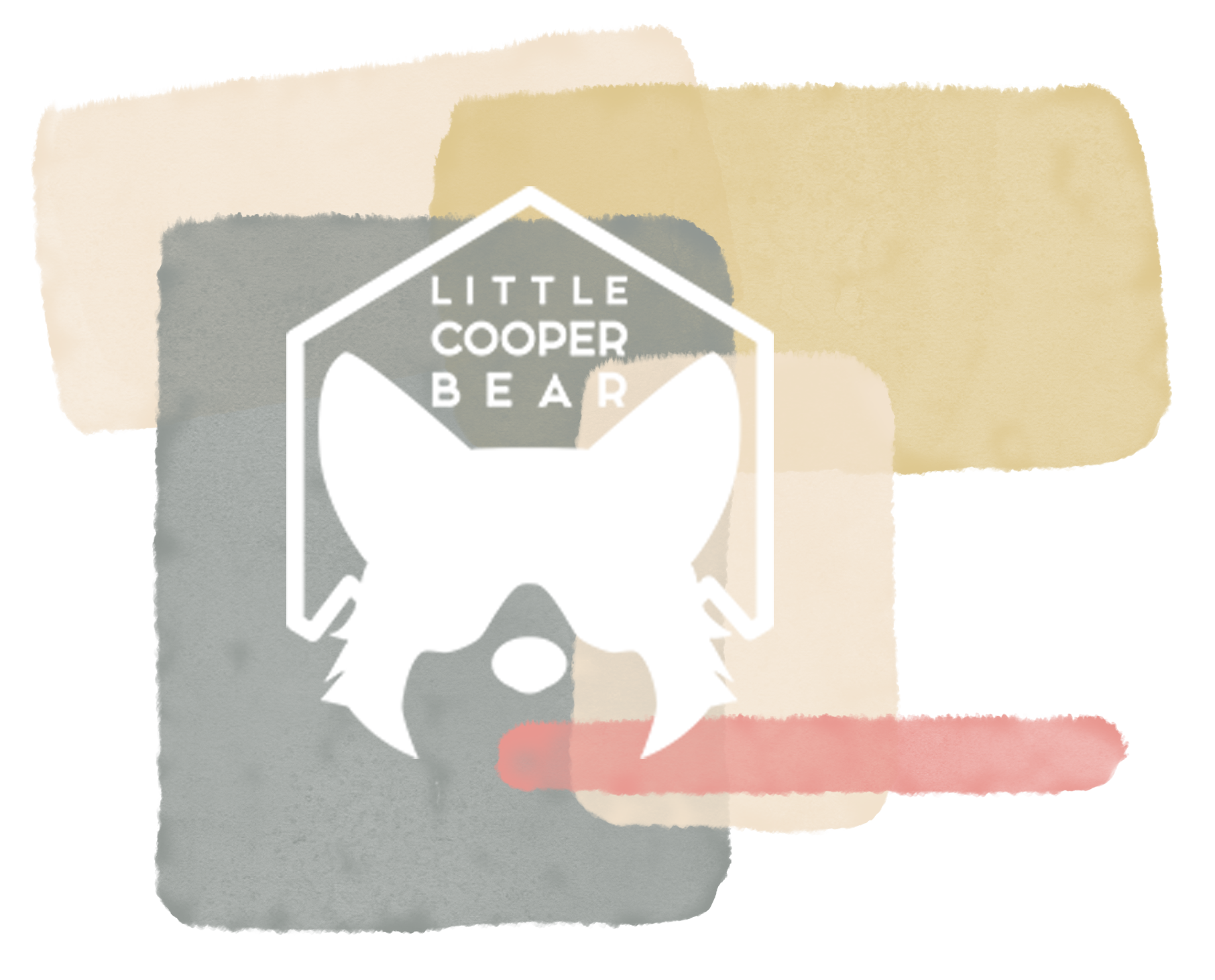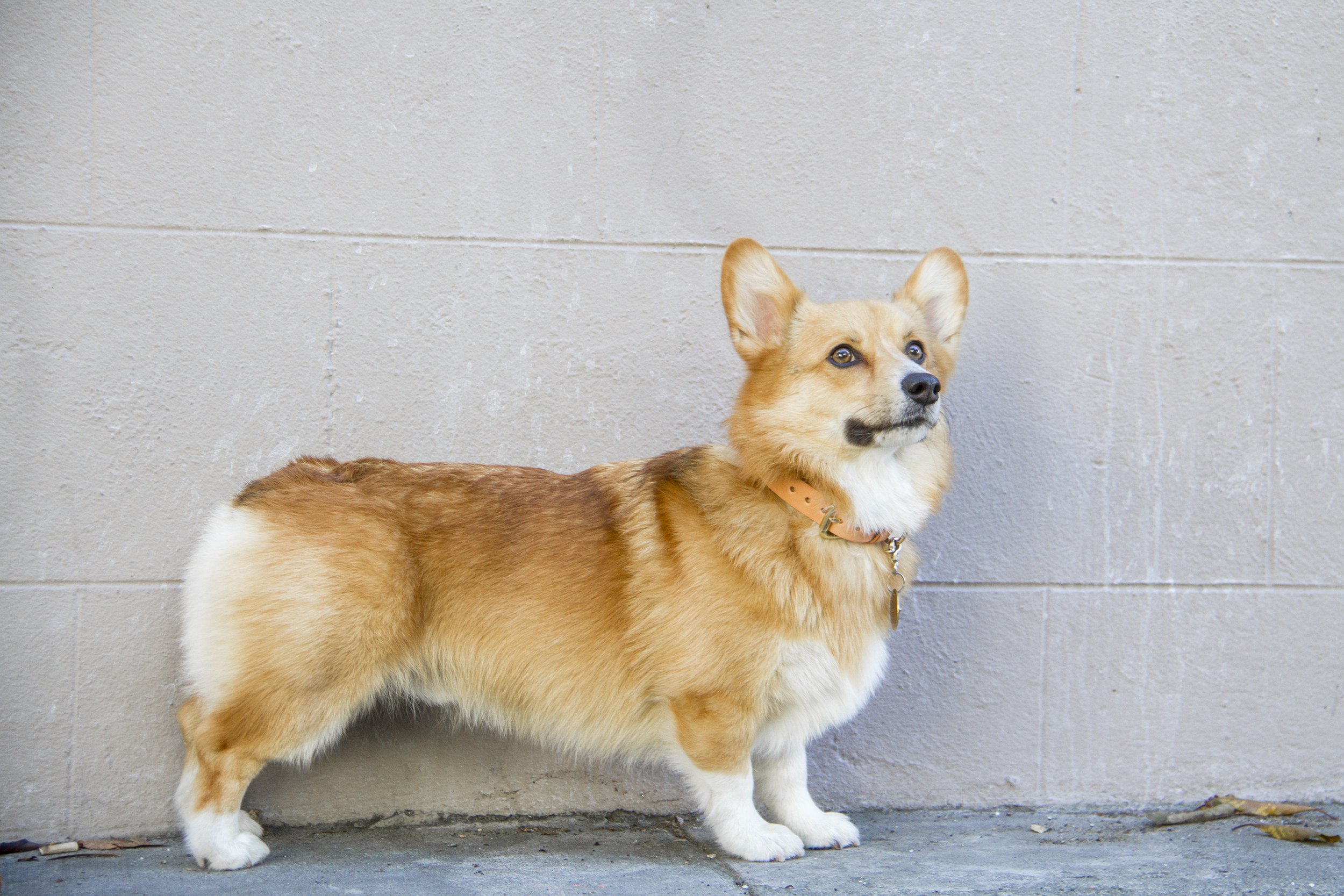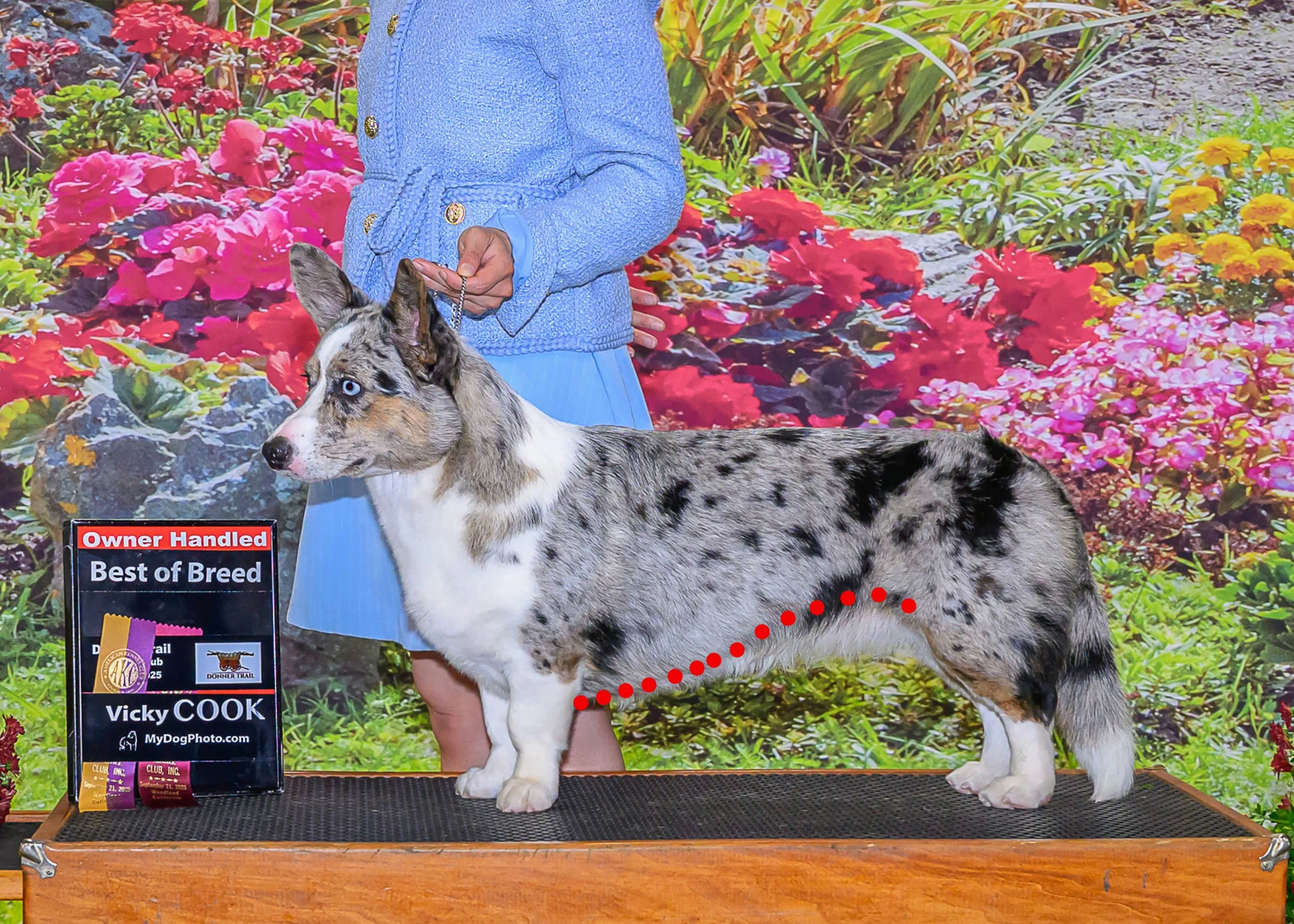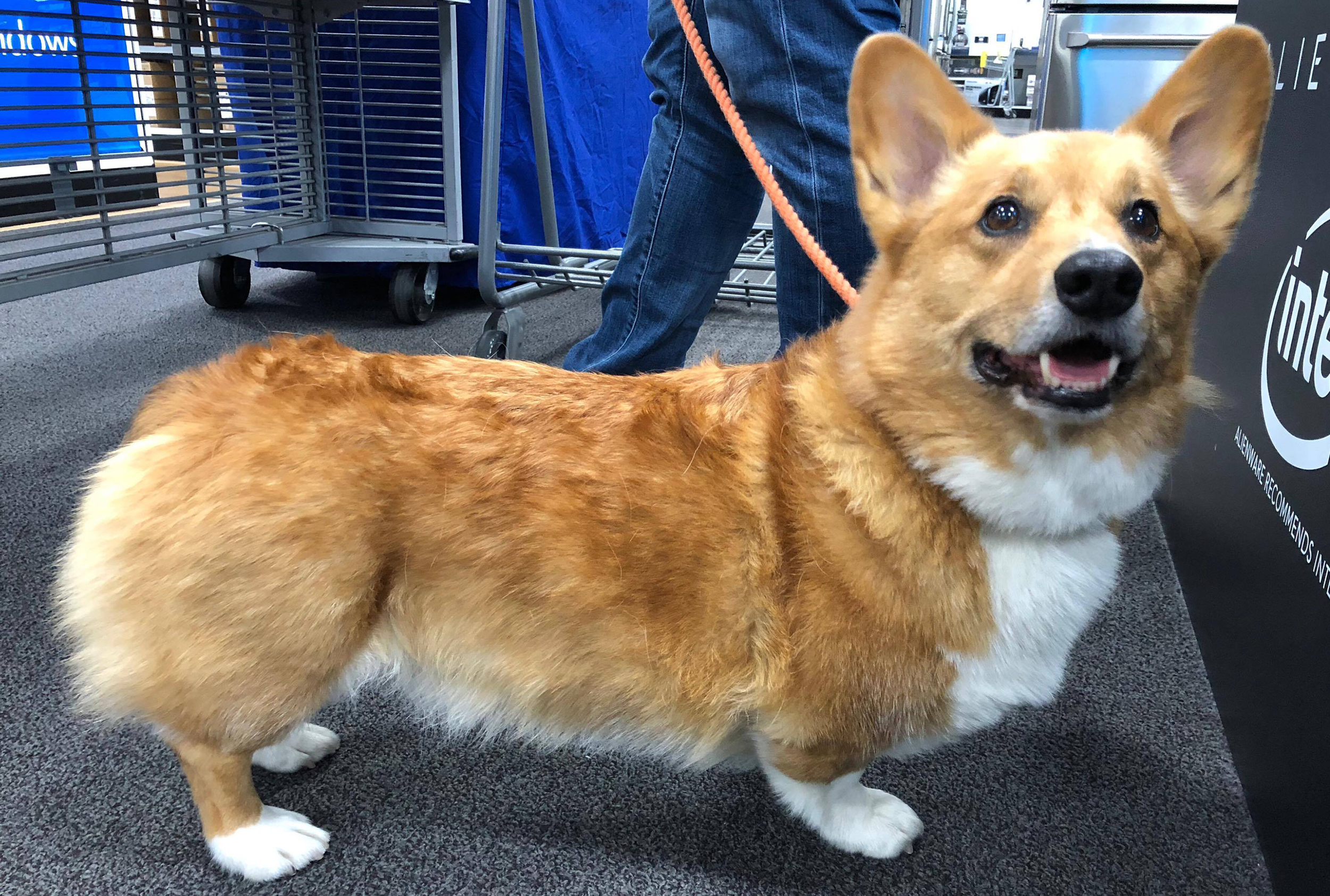The Corgi Truth: Weight Matters
Believe it or not, corgis LOVE to eat (mine 100% does). And if they are left alone with an unlimited amount of food, most corgis might as well eat themselves to death. Those pleading eyes can be hard to resist when they're begging for more food. But if you give in, you're doing a huge disservice to your corgi's health. Who can resist the look of adoration and hungry eyes? They’re just too cute! But you know what is not cute? A fat, overweight corgi.
There’s still a misconception going on around the corgi community that a corgi should look round and pudgy. Too many viral videos involved overweight corgis strutting their butt and looking extra THICC (see slang definition here), and chonky/chunky. This is not okay. On numerous occasions, I have had people telling me that Cooper (11 year old, pembroke welsh corgi) is "the skinniest corgi [they've] ever seen" and "he's not as cute since he doesn't look like a round loaf of bread" because they're so used to seeing large, overweight (borderline obese) corgis. A corgi should have a waistline with a visible abdominal tuck just below the ribcage.
This post isn't to be snarky or rude about your corgi. On the contrary, it’s to raise awareness and continue to iterate the importance of maintaining a healthy weight for your dog, particularly your long-bodied short-legged pups. By no means is this supposed to be snarky or rude about your corgi (I’m really passionate about it).
Why Weight Matters?
For one, the cardigan and pembroke welsh corgis are low to the ground. They are long-bodied, agile cattle and sheep herders. The cardigan welsh corgi tend to be on the larger side compared to the pembroke welsh corgi Any extra poundage would put tremendous strain on their bodies.
Both corgi breeds are prone to having hip dysplasia, intervertebral disc disease (IVDD), and hip/joints/back complications due to the nature of their body structure. They should maintain a healthy weight in order to prevent any of those detrimental health problems and diseases. Not only that, extra (unnecessary) weight also puts a strain on other organs such as the heart and lungs. Paws can become misshapen to compensate for the weight distribution!
According to the VCA (Veterinary Centers of America): Overweight and obesity set the stage for increased risk of joint damage and subsequent osteoarthritis (OA), leading to chronic pain...What we now know is that fat tissue is very biologically active and secretes hormones and other chemicals that both cause and enhance inflammation. The hormone leptin, which is produced by fat cells, causes inflammation when it infiltrates joints. In addition, leptin may influence the bone changes associated with OA. Finally, inflammation can affect the body’s responses to other hormones such as cortisol and insulin, further unbalancing the body’s attempts at self-regulation and influencing the amount and extent of pain dogs experience. The important underlying message is that fat itself contributes to inflammation; inflammation is a part of the pain associated with OA and degenerative joint disease; and overweight and obesity contribute to this vicious cycle.
So yes, weight matters A LOT for a corgi, as well as other dog breeds (especially if they're long bodied; think dauschund, dandie dinmont terrier, petit basset griffon vendéen).
Something not many people know is that Cooper's littermate brother, Chopper, developed hip dysplasia at the early age of one. He was also overweight for his size and structure (32+ pounds) which had caused tremendous strain on his hip and joints, eventually worsening his condition where he had to get surgery. Cooper has always been more active than his littermate, but hearing that Chopper got hip dysplasia prompted me to make sure Cooper continues to maintain his optimal best. As of writing this, Cooper is now 11 years old and has been very strict on his weight (he has shown mild IVDD and early arthritis).
Corgis need a stringent feeding and exercise regimen to maintain a healthy weight. Depending whether your corgi is shorter, taller, or longer than the standard (for cardigan and pembroke), you'll need to adjust to their ideal weight up or down.
Cooper (26 pounds), Top View
Body Condition Score
To keep your corgi healthy and happy, keeping them to their ideal weight range is very important. A good indicator is the body condition score (pet obesity prevention BCS chart visual. Assessing body condition score is a subjective method to evaluating body fat. It combines visual assessment (top and side) and palpation (waist, ribs, abdominal tuck, and back to tail).
To figure out whether your corgi is overweight or underweight, use your hands and try to feel their ribs. If you have a hard time feeling the ribs and counting, then your dog is overweight. If their ribs feel sharp or appear distinctly visible, then your dog is underweight. An ideal score is between 4 and 5 on a scale of 9.
The three photos above showcase the top view of Drewbert (32 lbs), Swayze (22.5 lbs), and Cooper (26 lbs). These three corgis provide excellent examples of healthy shapes at different weights. Each corgi is structured differently from one another but what they all have in common is a waistline with a visible abdominal tuck just beneath their ribs. That abdominal tuck is important to have for a corgi. If your dog does not have a visible abdominal tuck and lacks an hourglass waistline, then you should re-evaluate your corgi's weight and be honest about it.
Friday, Side View, Photo © Vicky Cook
When viewing your corgi at a side view, good contour is when the hip is high and the chest is deep where the angle should be between 30° and 45° along the abdomen from the end of the breastbone to the pelvis (see red dotted line in above image).
Any dog, be it a corgi or golden retriever, should not be dragging extra poundage. Being overweight diminishes a dog's overall health, ability to play, breathe, run, walk, and just any physical activities. Not contributing positively to the health of your dog and allowing them to become overweight is pure negligence.
Below is Bailey, he's a 10 year old corgi that weighs 33 pound with a fantastic body structure and good waistline. His corgmom does an amazing job by making sure Bailey is eating the right amount of food and getting plenty of exercise. For a corgi his age, Bailey is a sturdy and rambunctious puppy! Maintaining good optimum weight will enable your corgi to live a happier and fuller life.
The Do's and Don'ts
Preventative care is something you can have control over in regards to your corgi's health. Here are some quick tips on how you can help maintain their weight and overall fitness.
The DO's
Do go on regular daily walks or runs (3-4 times a day is great). Exercise is crucial!
Do hike often with your dog on weekends
Do measure your dog's food accordingly
Do check your dog's body condition often to address any underlying issues
Do give low-calories treats
Do ask your Vet(s) questions about weight. Question everything!
Do be brutally honest with yourself and your dog's weight
Do partake in low impact activities (ex. swimming)
The Don'ts
Don't feed any table scraps. Resist the begging!
Don't overfeed during mealtime by guessing the amount (check those toppers!)
Don't give high-calories and an excess amount of daily treats. Be strict!
Don't let your dog be a couch potato
Don't defend your dog's overweight-ness or obesity by saying that "they're big boned"
Don't glorify a dog's cuteness with being fat, overweight, and obese
By no means am I an expert in corgi/dog anatomy or physiology. All this information was done through online research from reputable sources and through multiple discussions/visitation with our Veterinarians, as well as personal experiences. Our veterinarians are brutally honest with us when it comes to preventative care and the topic of weight is a huge one that they never skimp out on.
Dog obesity continues to be one of the fastest growing health problems for dogs today that constantly needs to be addressed. This is easily preventable! As a dog parent, we are in control of feeding them and it is with our due diligence to make sure that our dog(s) live their best life while feeling their best.
This type of information is something that I want to pass along to corgi owners (new and old) in hope that it will enlighten the way we think about our dog's overall health. This information can also be applied to any dog breed, not just corgi. I hope that you found this post informative.
Just remember that corgis in general should have a lean and fit body. The perception that they should look round and pudgy is wrong. It's not cute when it's a potential health problem. And with that, I'll leave a few places for further reading:
Weighty Matters: The Skinny on Fat Corgis
Pet Obesity Prevention
Obesity in the Dog
Animal Science Reviews 2011
A HUGE thank you to our wonderful dear friends Drewbert, Swayze, and Bailey for allowing us to use their photos. Please check out these amazing corgis!











